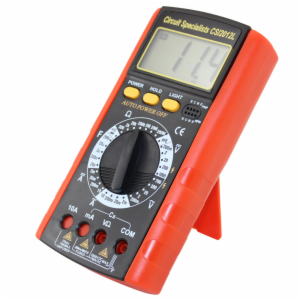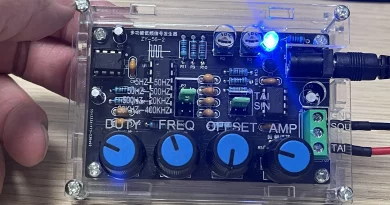TESTING DC VOLTAGE WITH OSCILLOSCOPES AND DIGITAL MULTIMETERS
DC voltage can measured using either an oscilloscope or a digital multimeter. Each piece of testing equipment has its advantages and disadvantages. Let’s first take a look at using an oscilloscope.
Oscilloscope
You can measure DC voltage with an oscilloscope that has a direct-coupled deflection amplifier or terminals for connecting directly to the cathode-ray tube’s deflection plates, but measuring DC voltage using an oscilloscope is only convenient in some situations — e.g., when you’re using the oscilloscope to take other measurements on the same piece of equipment or when you need a high-impedance measuring device and a vacuum tube voltmeter is not available.
Oscilloscopes will not usually load down the circuit you’re testing because of their high input impedance, but oscilloscopes are designed primarily for waveform observation and are generally less accurate than other types of testing equipment commonly used to measure DC voltages. One advantage of using an oscilloscope is its capability of monitoring the amount of AC ripple voltage riding the DC voltage; this advantage makes an oscilloscope perfect for troubleshooting DC power supplies with excessive ripple resulting from component failure.
Digital Multimeter
The majority of today’s analog voltmeters are accurate to roughly plus-minus two percent of full-scale reading. (Like

oscilloscopes) the majority of digital multimeters have a high input impedance, so they’re unlikely to disturb the circuit you’re testing and generally provide an accuracy of at least plus-minus point one percent.
Digital multimeters display numerical readings and these direct-reading displays — in addition to their ability to change range and polarity — eliminate parallax issues, reduce error, and significantly increase the speed at which you can take measurements. The digital data from multimeters can be processed by computers, printers, magnetic tape equipment, etc. as well.
